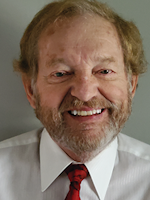If you want to be inundated by new patients, advertising free exams and x-rays will bring folks flocking, but be careful what you wish for. My experience indicates that among the unfamiliar names on your schedule, many won’t show up, and the majority of those who do will not be interested in quality care. They’re just looking for a deal. A steady flow of individuals who keep appointments, accept and value treatment, pay promptly, and refer enthusiastically comprise the lifeblood of thriving dental practices. Let’s consider how to maximize the occurrence of this blessed event.
In the rural Iowa practice where I’ve whiled away 40 blissful years whittling on teeth, most referrals are word-of-mouth and none please me more than those coming from a patient our entire staff enjoys. Your primary source of advertisement may be your website, direct mailers, newspaper ads, radio spots, or television commercials. Whatever actuates an initial response, for weal or woe, a relationship begins when your practice receives that call. Maintaining a commitment to excellence at this critical moment of contact is paramount.
Stop hanging up on new patients
I usually worked with an associate, sometimes two, and a team of six to 10 (varying by how many dentists and hygienists we employed). Based on the sheer number of people involved, inconsistency was a constant concern. However, even in an office where only one person answers the phone, reliability is far from a given. A call could come to an already-exhausted front desk person while three people in the reception area impatiently tap their toes and glance at their watches. Unless the person taking the call knows exactly how to proceed (and can summon help or is astute enough to return the call at a more propitious time), this critical opportunity may not be handled ideally. Consistent quality in every venue is made possible by a clearly defined and wholly understood system. Our new patient call slip is a great example.
First, we record the date the call is received—I insist every new patient be seen within two weeks. Using a block appointment system, we reserve one 40-minute interval per day for exams. When our wait time passes a fortnight, we allocate more preblocked slots.
We document who took the call as consistency in contact is vital to establishing meaningful rapport. (Staff always offer their names when answering the phone, as one speaks to a person rather than an office. Not “This is Dr. Wilde’s office,” but “Good morning. This is Carol from Dr. Wilde’s office. Can I help you?”)
The patient’s name is spelled correctly and phonetically. We also ask how she prefers to be addressed. Nothing sounds sweeter than one’s name unless it’s mispronounced. (Mine is “wild,” not “wild-ee.” Most people can handle “John.”)
We ask who recommended us and record that name on our call slip and a second time on a separate list of people who referred. Carol will then mail a handwritten thank-you note, sugarless hard candies (which are delicious and enhance oral health by stimulating salivary flow), and a coffee mug embossed with our logo and contact information to everyone kind enough to refer. After two or more referrals, we include movie passes or car wash tokens. We prefer shipping to a place of employment, where the gift may initiate a discussion. “Your dentist sent you that? How nice.” A general principle: If you wish behavior repeated, reward it.
The following questions begin informing us of the patient’s dental IQ and oral health values. We record answers verbatim.
- How may we be of service? (The equivalent of chief complaint.)
- When was your last dental visit?
- Who did you see? Could you provide contact information?
- What type of care did you receive? (There exists a significant difference between a patient last seen four years ago for an emergency extraction versus one who recently had implants or veneers.)
- Are you pleased with past treatment?
- Do your gums bleed?
- Are you troubled by frequent headaches? (I treat TMJ issues with appliances and full-mouth equilibration. Nociceptive trigeminal inhibition [NTI] devices have also proven to be successful.)
- Would you like whiter teeth?
- On a scale of 1 to 10, how would you rate the appearance of your teeth?
- On a scale of 1 to 10, how important is it to keep your teeth a lifetime?
- What plans do you have to achieve this goal?
- What is most important to you about a dentist? Gentle, painless, high-quality care, cosmetic skill, pleasant, does not scold. (Multiple answers are accepted.)
We explain the need for such detailed information by stating, “Our dental team wants to be certain that your first visit is a positive, productive experience.” This truth reinforces our core value of concern for others.
We want to be aware of any acute symptoms and, if need be, see the patient that day for palliative care. Because we boast a cross-trained team and five operatories, any patient in pain is invited to come immediately but advised there might be an in-office wait. Simply knowing she will not have to endure a harrowing night is a relief. At the very least, a long-acting local anesthetic can be administered, possibly by a hygienist, and appropriate medications prescribed. I’m puzzled by how few offices cross-train, as the existing staff does all the work, and efficiency and profitability escalations are significant. Dentists have advised me that staff don’t stay long enough to justify the extra training. If so, this is emblematic of an ominous problem.
Carol mails out a package to the newest member of our dental family which includes an appointment card, handwritten welcome note, and an office mug overflowing with sugarless candy. We insert a health history form because it’s easier to finish at home, where information such as medications and physicians’ phone numbers are readily accessible. Also, some people take an exquisitely long time to complete this form in-office and may benefit from the help of a spouse.
Experienced staff now possess adequate information to schedule appropriately. We allow 10 minutes for children, 20 minutes for young adults with no apparent problems, 30 minutes for adults without perceived needs, and 40 minutes for those with concerns. These guidelines are flexible, as I trust my staff to allocate the ideal time.
The conversation closes with Carol asking if there are any concerns or questions. The appointment date and time are reinforced, and the patient is reassured that her new buddy Carol will be waiting to greet her.
The record and call slip are immediately transferred to my desk, as I contact every new patient on the evening of the day he or she schedules. This call dumbfounds most folks as “No doctor has ever taken the time to do this.” Having a wealth of information available makes starting our chat easy. As the conversation proceeds and trust develops, I’m frequently informed of past dental trauma, which creates an opportunity to describe how we assure painlessness by applying topicals, using a warmed anesthetic, giving slow, gentle injections, plus offering nitrous oxide and conscious sedation. Our new patient failure rate confirms this system’s success, as what was once by far our most significant source of wasted time has dropped to virtually zero.
At the appointed time, Carol greets our newest patient with a warm smile and addresses her by her preferred name. Escorted to my private office, she assists her with any necessary paperwork. Handed an ornate hand mirror, the patient then completes a smile evaluation done in an interview format. I am very interested in her smile self-perception, and having this discussion stimulates people to consider, “Why shouldn’t I have a beautiful smile?” We offer bonding, veneers, orthodontics, orthopedics, and a highly popular Six Month Smiles program for adults. I enter the room to greet a friend, as we are already a long way toward forming the high-trust relationship essential to maximize case acceptance.
Please tailor our effort to your unique office values. While this slip is no magic bullet, it is a personification of our commitment to excellence and dedication to patient well-being. Is it worth all this trouble? It is to those who wish to excel in their life’s work while enjoying the journey.
Editor's note: This article appeared in the August 2021 print edition of Dental Economics magazine.








